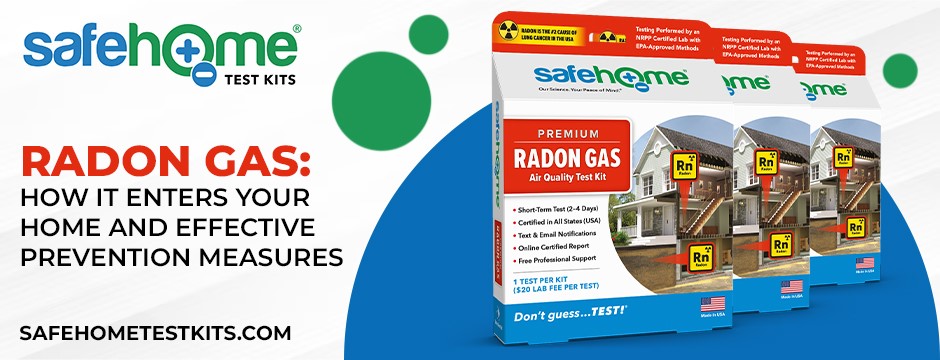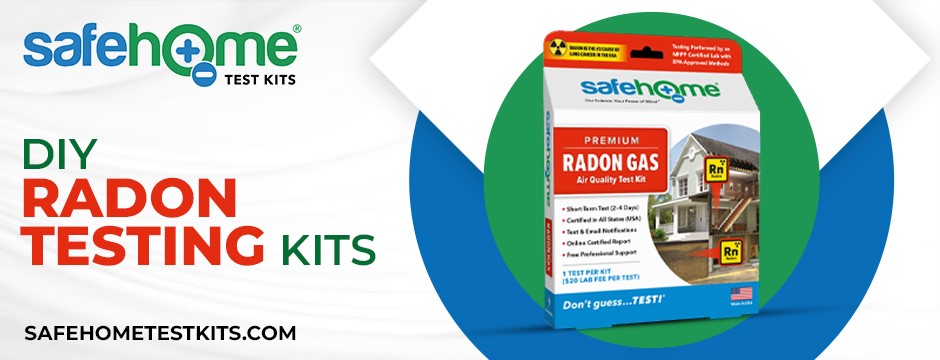Radon Gas: How It Enters Your Home and Effective Prevention Measures

Radon gas is a naturally occurring radioactive element that can pose significant health risks if not adequately addressed. This colorless and odorless gas is a leading cause of lung cancer, second only to smoking. Understanding how radon enters your home and taking preventive measures is crucial to ensuring a safe and healthy environment for you and your loved ones. This comprehensive guide delves into the mechanisms of radon entry, its associated health risks, testing methods, and effective prevention strategies using a radon testing kit.
What is Radon Gas?
Radon gas is a radioactive noble gas that forms naturally as a decay product of uranium, a common element in soil and rocks. As uranium undergoes radioactive decay, it releases radon gas into the air. This gas can seep into homes through various pathways, making an understanding of its behavior and properties essential.
Health Risks Associated with Radon Exposure
Radon exposure is a serious health concern due to its link with lung cancer. When inhaled, radon gas further decays, releasing tiny radioactive particles that can damage lung tissue. Prolonged exposure to elevated radon levels increases the risk of lung cancer, particularly for smokers and those with a family history of the disease. Children and older people are also more vulnerable to its effects.
Pathways of Radon Entry
➢ Soil-to-Air Transfer
Radon gas is released from the soil as uranium undergoes radioactive decay. This gas can enter your home through cracks and gaps in the foundation. Factors such as soil composition, moisture levels, and ventilation can affect the rate at which radon enters your living spaces.
➢ Cracks and Gaps in Foundations
One of the primary pathways for radon entry is through openings in your home’s foundation. Cracks in floors, walls, and utility penetrations provide channels for radon gas to infiltrate indoor spaces. Sealing these openings and addressing foundation issues can significantly reduce radon infiltration.
➢ Well Water
Radon can also enter homes through well water. Groundwater dissolves radon, and when water is used for activities like bathing or cooking, radon gas is released into the air. Inhaled radon particles can pose a risk to your health.
Radon Testing: Assessing Your Home's Risk
Radon testing is a crucial step in determining the radon levels present in your home. Without testing, it’s impossible to know if radon gas is present at hazardous concentrations.
➢ Short-Term vs. Long-Term Testing
Short-term and long-term radon tests are the two main options for assessing radon levels. Short-term tests provide a snapshot of radon concentrations over a few days, while long-term tests offer a more comprehensive view over several months. Both methods have their advantages and limitations.
➢ DIY Testing Kits
Readily available and affordable, DIY radon testing kits include instructions for placement and retrieval, making it easy for homeowners to conduct tests themselves. Following the instructions carefully is crucial for accurate results.

➢ Professional Radon Testing
Hiring a certified radon measurement specialist ensures accurate and reliable results. Professionals have the expertise to determine the appropriate testing locations and interpret the data, providing you with a clear understanding of your home’s radon risk.
Preventive Measures: Minimizing Radon Entry
➢ Radon-Resistant Construction Techniques
Implementing radon-resistant construction techniques can be highly effective during new construction or significant renovations. This includes installing vapor barriers and vent pipes to redirect radon gas away from indoor spaces.
➢ Improving Ventilation
Proper ventilation plays a vital role in reducing radon concentrations. Increasing indoor and outdoor air exchange helps dilute radon gas and prevent its accumulation. Regularly opening windows, using exhaust fans, and maintaining a well-ventilated living environment is essential.
➢ Radon Mitigation Systems
Radon mitigation systems, such as active soil depressurization (ASD) and heat recovery ventilation (HRV) systems, are designed to lower radon levels within your home. ASD systems create a pressure differential to draw radon gas from the soil and vent it outside, while HRV systems enhance ventilation and air exchange.
➢ Well Water Treatment Options
If your home relies on well water, testing and treating for radon is crucial. Aeration and activated charcoal systems are standard methods for removing radon from well water, ensuring that radon gas is not released into the air during usage.
Legal and Regulatory Considerations
➢ National and Local Radon Regulations
Several countries and regions have established radon regulations and guidelines to protect public health. Familiarize yourself with these regulations and ensure compliance when buying, selling, or constructing a home.
➢ Disclosure Requirements During Real Estate Transactions
Many jurisdictions require radon testing and disclosure during real estate transactions. Sellers may be obligated to provide radon test results to potential buyers, enabling informed decisions about radon-related risks.
➢ Incentives for Radon Testing and Mitigation
Some areas offer incentives, such as tax breaks or financial assistance, for radon testing and mitigation. Explore local programs that can help you reduce radon levels in your home.
➢ Education and Awareness
Raising public awareness about radon gas and its associated health risks is crucial. Many individuals are unaware of the dangers of radon exposure, highlighting the need for educational initiatives.
➢ Integrating Radon Education into School Curricula and Community Outreach Programs
Integrating radon education into school curricula and community outreach programs can empower individuals with the knowledge needed to protect themselves and their families.
Numerous resources, including government agencies, nonprofit organizations, and environmental health departments, provide information, guidance, and support related to radon testing and mitigation.
Safe Home’s Premium Radon Test Kit: Features and Benefits
Safe Home® Radon Gas Test Kit (Premium) is a powerful tool that empowers individuals to take control of their indoor air quality and prioritize their health. This kit offers several features and benefits that make it a reliable choice for detecting and addressing radon gas:
- Comprehensive Testing Supplies: The kit includes all the necessary supplies for effortless sample collection, making the testing process simple and user-friendly.
- Quick Results: Safe Home’s test kit results come back to you within 2-4 days and are available online for convenience.
- NRPP-Certified Lab: Safe Home’s lab holds NRPP certification in all 50 states for radon testing. This certification is crucial for home inspections, mortgage loans, and real estate closings, making the kit a valuable asset for homeowners and professionals.
- Trusted by Experts: The reliability of Safe Home’s radon test kits is evident through the trust placed in them by homeowners, contractors, and home inspectors. The kit’s accuracy and effectiveness have made it a preferred choice in the industry.
Taking Action Against Radon with Safe Home®
The impact of radon on indoor air quality and human health cannot be underestimated. Safe Home’s radon test kit empowers individuals to identify and proactively treat radon gas. By offering a user-friendly testing process, comprehensive laboratory analysis, and NRPP certification, Safe Home® ensures that individuals can make informed decisions about their living environments.

Conclusion
Addressing radon gas entry into your home is a proactive step toward safeguarding your health and well-being. By understanding the pathways of radon entry, conducting regular testing using a Safe Home® radon testing kit, and implementing effective prevention measures, you can create a safer indoor environment for yourself and your loved ones. Remember that radon is a silent threat, but with the proper knowledge and actions, you can mitigate its risks and enjoy a healthier life.


